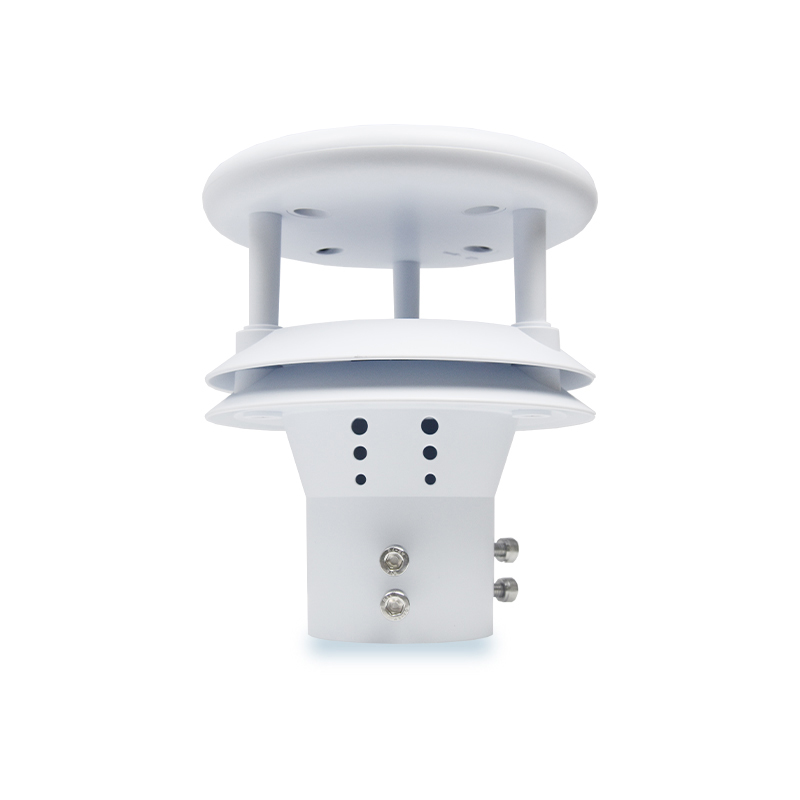Shandong Fengtu IOT Technology Co., Ltd
Sales Manager:Ms. Emily Wang
Cel,Whatsapp,Wechat:+86 15898932201
Email:info@fengtutec.com
Add:No. 155 Optoelectronic Industry Accelerator, Gaoxin District, Weifang, Shandong, China

Sales Manager:Ms. Emily Wang
Cel,Whatsapp,Wechat:+86 15898932201
Email:info@fengtutec.com
Add:No. 155 Optoelectronic Industry Accelerator, Gaoxin District, Weifang, Shandong, China
time:2025-04-11 09:05:23 source:Weather Station viewed:240 time
In meteorology, the accurate measurement of rainfall is an important project. From agricultural irrigation decisions to the planning of urban drainage systems and to meteorological disaster warnings, accurate rainfall data is required. To meet this need, scientists have developed a variety of rain sensors, among which tipping bucket rain sensors, optical rain sensors, and piezoelectric rain sensors are more commonly used in practical applications.
The Stainless Steel Tipping Bucket Rain Gauge is a classic rainfall measurement device. Its core components are two symmetrical tipping buckets. When rainwater falls into one of the tipping buckets and reaches a certain weight, the tipping bucket will tip over and pour out the rainwater, which will trigger a counting device. By recording the number of times the tipping bucket tips over, the rainfall can be calculated. This sensor has a simple structure and relatively low cost, and it is widely used in long-term meteorological observation stations. However, its accuracy is easily affected by factors such as raindrop size and wind force. In extreme weather conditions, the measurement accuracy may decrease.
The Optical Rain Gauge adopts a completely different working principle. It uses optical components to emit and receive light. When raindrops pass through the light, the light will be scattered or blocked. The sensor calculates the size and number of raindrops by detecting the change in light intensity and then obtains the rainfall. The Optical Rain Gauge has a fast response speed, can monitor the rainfall situation in real time, and has a low sensitivity to raindrop size, showing good performance in measurement accuracy. In some occasions with high real-time requirements, such as meteorological monitoring at airports, the Optical Rain Gauge can provide timely and accurate rainfall information for aircraft takeoffs and landings.
The piezoelectric rain gauge works relying on the characteristics of piezoelectric materials. When raindrops hit the piezoelectric elements on the surface of the sensor, a piezoelectric effect will occur, that is, an electrical signal proportional to the impact force of the raindrops will be generated. By analyzing these electrical signals, the sensor can calculate the kinetic energy of the raindrops and convert it into the rainfall. The piezoelectric rain gauge has a strong ability to detect tiny raindrops and is not affected by electromagnetic interference. It is widely used in some scientific research projects with high requirements for the measurement of slight rainfall, such as when studying meteorological phenomena like cloud and fog precipitation, it can provide high-precision data support.
In summary, the Stainless Steel Tipping Bucket Rain Gauge has a simple structure and low cost, and it is suitable for use in scenarios such as conventional meteorological observation stations where the accuracy requirements are relatively not strict and long-term stable monitoring is emphasized; while the Optical Rain Gauge, due to its fast response and good accuracy, is suitable for places such as airports and urban transportation where there is a high demand for real-time rainfall information; the piezoelectric rain gauge has high sensitivity to slight rainfall and has become a tool for exploring complex meteorological processes in the scientific research field.
In fact, each type of rain sensor has its own advantages and can accurately monitor rainfall data in its respective suitable scenarios.
How to choose specifically depends on your own budget and accuracy requirements.

The Insect Monitoring Light integrates modern optoelectronic, numerical control, and other technologies in its working principle. It utilizes a specific light source, typically a 20W blacklight tube with a main wavelength of 365nm, which emits light highly attractive to pests, causing them to approa...
The Visibility detector is an intelligent meteorological monitoring device, mainly used for real-time monitoring of low visibility meteorological conditions, and is widely applied in fields such as transportation, meteorology, and environmental monitoring. This system, through the front-end visibili...
Agricultural conditions refer to various situations presented by crops during their growth and development, encompassing multiple aspects such as soil fertility and moisture content of cultivated land, seedling conditions, growth trends, pest and disease situations of crops, as well as agricultural...
In agricultural production, pest infestations restrict crop yield and quality. Traditional manual inspection-based monitoring is labor-intensive and time-consuming, with limitations such as a narrow coverage range and delayed data, making it difficult to provide accurate support for pest prevention...